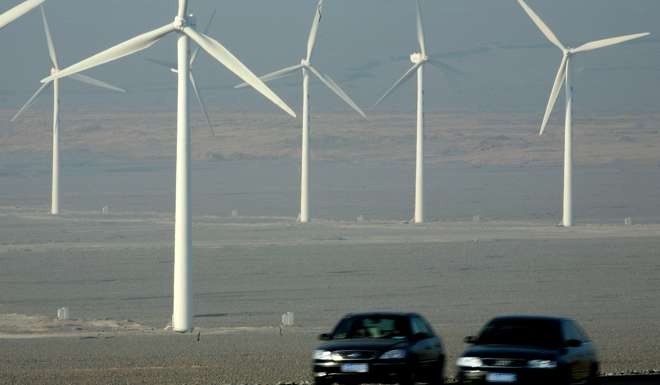
Hong Kong, China in pole position to lead electric car revolution
With the right government policy in place, electric car ownership can be raised to Norwegian levels and the air we breathe transformed
Just when we thought a bit of good news was beginning to develop on how we are responding to the challenge of global warming, along comes unreformed, flat-Earth Trump to spoil the party.
But despite the shadow cast by the US president-elect’s love affair with fracking and fossil fuels, and his threat to withdraw the US from the Paris Climate Accord which took effect just two weeks ago, the progress being made to reduce our reliance on fossil fuels is taking many by surprise – and nowhere more so than here in China.
Even Hong Kong has rather flamboyantly joined the party – both symbolically by hosting, just a month ago, one of this year’s 12 Formula E races, and more materially by becoming one of the world’s biggest per-capita markets for electric cars. Surely Hong Kong is the perfect city for such a role.
We are witnessing a transformation of global power markets led by renewables
The International Energy Agency (IEA), in a clutch of recent reports, suggests that investment in renewable energy and the rise in generation coming from wind, solar, hydro and nuclear power is far outstripping even the most optimistic predictions of a decade ago. Oil and gas investment still accounts for the largest share of global energy investment – 45 per cent of a total US$1.8 trillion – but out of the US$400 billion spent on power generation, about two thirds went on renewables.

Noteworthily, much of the US investment was in oil and gas – in particular fracking – while the lion’s share in China was poured into renewables. According to the IEA, two wind turbines went up every hour in China last year. No wonder Fatih Birol, the IEA’s executive director, said: “We are witnessing a transformation of global power markets led by renewables.”
On the back of this surge in activity, the average generating costs for wind and solar power have tumbled at a pace that might soon put them on a par with conventional thermal power. The cost of electricity from new onshore wind farms fell 30 per cent between 2010 and last year, while the cost of power from large solar plants fell by two thirds. The IEA predicts that costs will continue to fall sharply between now and 2020, with a rising share of investment focused on renewables.
The note of caution – and the reason why Donald Trump’s shadow falls across the next four years – comes from the fact that much of this diversion of investment is due to government policy incentives, most important of all in China, the US, India and Mexico. A shift in incentives in the US could dent this encouraging progress.
As with power generation, so with cars. It is early days to get over-excited, since only a couple of countries worldwide can boast electric car use above 1 per cent of the total cars on the road (astonishingly, almost a quarter of cars on the road in Norway are either fully electric or plug-in hybrid cars).

And for anyone who has suffered the shock in China of almost being run over by totally silent two-wheeled vehicles careening along the pavement, we should not forget the formidable lead China has also taken in using electric power for mopeds, and of course for public transport and delivery vehicles. Beijing says China has 200 million mopeds on the road today – “almost the only relevant player globally”, according to the IEA – and 170,000 buses. The IEA forecast is for 400 million two- or three-wheeler vehicles on the road by 2030.
A clear advantage for China here is that their car industry is working with its own battery developers like BYD and Amperex Technology
There are still major challenges to be overcome before electric vehicles dominate our roads. Anyone watching Hong Kong’s E-Grand Prix will recall how cars had to be changed mid race because batteries did not have the capacity to get them all the way through. Improvements in battery technology clearly sit at the heart of future developments, but even here progress is striking. Battery costs have been cut by a factor of four since 2008, and their power has leapt. Carmakers are predicting that electric vehicles will soon be able to travel 300km on a single charge, rising to 600km over the coming decade.
Another clear advantage for China here is that their car industry is working with – and is supported by – its own battery developers like BYD and Amperex Technology, whereas the US electric vehicle leaders rely on Japanese and Korean batteries. Europe’s car makers have rather conspicuously fallen behind, not least because of the enthusiasm of companies like VW for diesel technology. But recent shocking and costly scandals over the doctoring of emissions data for diesel vehicles is likely to mean a big shift to electric car development. The competition can only be welcome.
The second big challenge – a keen current concern in Hong Kong – is the dreadful undersupply of charging stations for electric cars. A charging station at home can cost HK$50,000. The Electric Vehicle Club of Hong Kong says only one in 10 electric car owners has a charging station at home. Many residents’ associations are unwilling to underwrite the cost of installing them. Even worse, many developers are reluctant to install them in new housing developments.
With just 6,200 electric vehicles in Hong Kong out of a total of more than 530,000 cars on the road, it is unclear how quickly policies can be changed. Since vehicle emissions account for 14 per cent of Hong Kong’s greenhouse gases, 14 per cent of harmful respirable suspended particulates, and 20 per cent of volatile organics, it is clear that government leadership is required.
There is potential here for Hong Kong and the mainland to lead the world. Lift electric car ownership to Norwegian levels, and the air that we breathe will be transformed. But maybe I am letting my enthusiasm get ahead of me.
David Dodwell researches and writes about global, regional and Hong Kong challenges from a Hong Kong point of view

